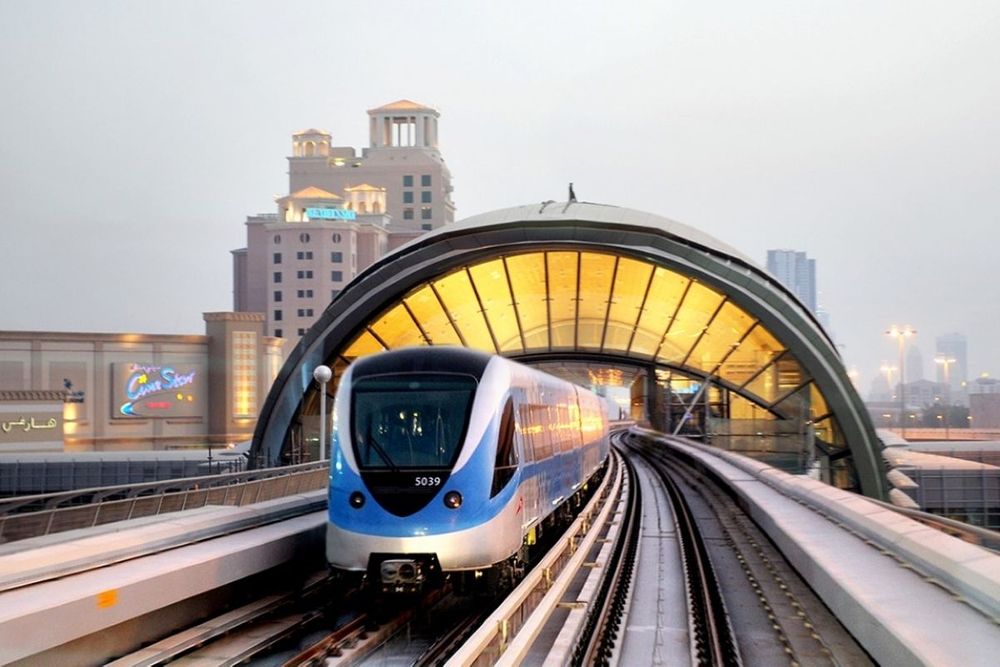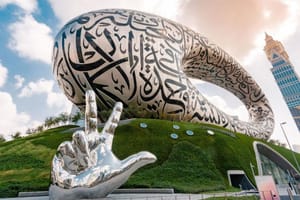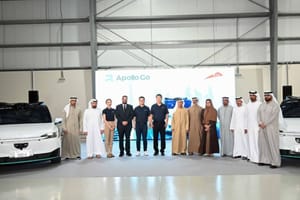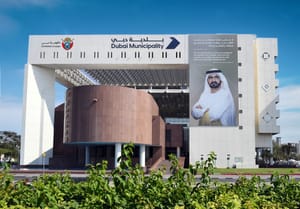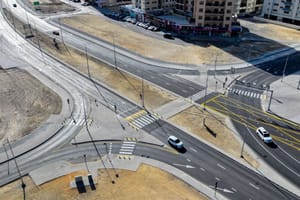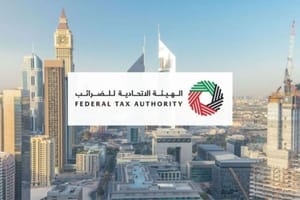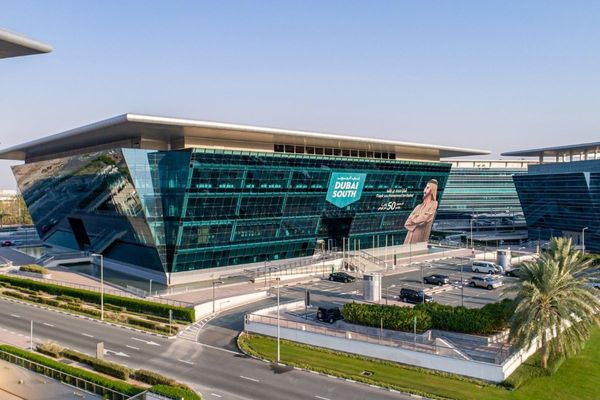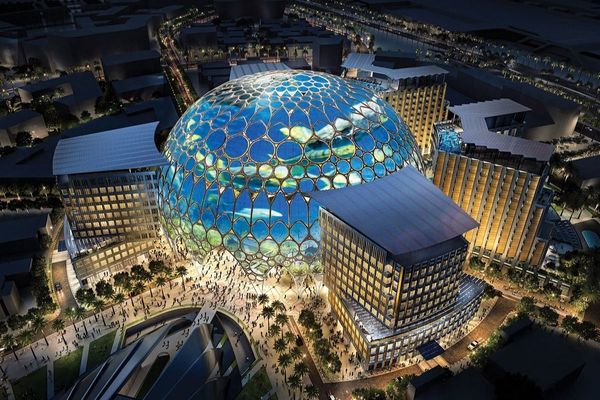RTA has finished 15 projects in time to serve Expo 2020, costing more than AED15 billion.
The portfolio of projects completed is highlighted below:
Service Hours
Dubai Metro Expo 2020 Station will operate on October 1st, synchronised with the official opening of Expo 2020. The Red and Green Lines of Dubai Metro will offer passenger services from Saturday to Wednesday from 05:00 am to 01:15 am (of the following day). On Thursday, the service will run from 05:00 am to 02:15 am (of the following day), and on Friday from 08:00 am to 01:15 am (of the following day). The service frequency will be 2:38 minutes during peak times. Dubai Tram will provide service from Saturday to Thursday from 06:00 am to 01:00 am (of the following day), and on Friday from 08:00 am to 01:00 am (of the following day).
Expo Buses will operate from 06:30 am and continue service for 90 minutes after the closure of Expo Gates. Passenger commuting service from the parking area (Expo Parking Shuttle) to the three Expo Gates will start at 09:00 am and continue for 90 minutes after the closure of Expo Gates. Bus Service between Expo Gates (Expo People Mover) will start service at 06:30 am and continue service 90 minutes after the closure of Expo Gates. Taxi and e-hail services will be running around the clock.
Crowd Management
RTA developed management plans and developed a structure for the mobility of Expo visitors using various transit means from the metro and bus stations inside and outside the emirate in addition to taxis deployed at the site. RTA also charted out a plan for managing the traffic movement on the surrounding roads and junctions during weekdays and weekends as well as days witnessing mega events throughout the period of Expo. It also charted out alternative plans for coping with all possible scenarios with the potential of causing snarls to ensure a permanent smooth traffic flow during the Expo period.
Roads and Bridges
To ensure the smooth flow of traffic that serves Expo 2020 as well as future projects in the area, RTA has accomplished the improvement of the surrounding roads network in the area that included the construction of 6 flyovers to ensure free traffic movement in all directions. It also constructed 64 bridges stretching 13 km, 5 box tunnels extending 450 metres, and roads extending 138 lane-kilometres in addition to 25 entry lanes and 21 exit lanes for vehicles at the Expo site.
RTA will manage about 30000 parking slots at the site of Expo distributed at several zones (Opportunity, Mobility, Sustainability, World, and Nissan Parking). RTA will cater to the management of these parking spaces using state-of-the-art technology devices to ensure a safe and smooth movement of vehicles from and to the parking lots. It will use intelligent traffic signs and manage the parking by a smart system connected to the traffic monitoring centre to identify vacant slots. RTA has developed alternative plans to cope with the events in case the parking lots are full by using the intelligent traffic signs on external and internal roads to direct motorists to alternative parking.
Due to the immense nature of the road projects, which were completed in 2020, they have been divided into six phases:
• Constructing the junction of Sheikh Mohammed bin Zayed Road and Expo Road.
• Constructing two flyovers at the Sheikh Mohammed bin Zayed Road to ensure smooth traffic movement to and from the site of the Expo. The first (Expo Junction) serves the traffic movement inbound from Dubai, Sharjah and other emirates heading to the Expo parking area. The second (Al Maktoum Junction) serves the traffic movement inbound from Dubai, Sharjah and other emirates heading to the site of Expo, in addition to road works extending 16 km.
• Constructing the intersection of Sheikh Zayed Bin Hamdan Al Nahyan Street with Expo Road, which involved transforming the signalised roundabout into a flyover that provides free traffic in all directions.
• Constructing 3 intersections and widening the Sheikh Zayed bin Hamdan Al Nahyan street from two to five lanes in each direction. The intersection of Sheikh Zayed bin Hamdan Al Nahyan Street with Al Yalayes Street was transformed into a flyover that provides free traffic movement in all directions. Constructing the second and third intersections by constructing two bridges with two lanes in each direction on Sheikh Zayed bin Hamdan Al Nahyan Street fitted with traffic lights to serve the traffic heading to the Dubai Investments Park. Constructing a service road of two lanes in each direction on the Sheikh Zayed bin Hamdan Al Nahyan Street and Al Yalayes Street. Improving the entrances to the Dubai Investments Park on Al Yalayes Street, which raised the road capacity from 7,800 vehicles per hour to 49,800 vehicles per hour at the intersection area, and from 4,800 vehicles per hour to 28,800 vehicles per hour at the signalised intersections.
• Constructing the intersection of the Emirates Road with Expo Road by converting the previous roundabout into a flyover to provide free traffic in all directions. It involved increasing the number of lanes on Expo Road from four to six lanes in each direction over a 3 km stretch, adding 5 km to the Emirates Road, and constructing service roads that increased the road capacity from 2,000 vehicles per hour to 54,000 vehicles per hour.
• Constructing Expo Road, involving the construction of bridges extending 2.6 km, and roads spanning about three km. The number of lanes of Expo Road increased from three to six lanes in each direction over a 3 km sector, and service roads were constructed to improve the traffic situation of the existing roads. Works included elevating Expo Road at the intersection with Al Asayel Street via a bridge spanning 800 meters comprising of six lanes in each direction. Two other bridges were constructed to connect Expo Road with the service road in the area extending one kilometre to ensure smooth movement to and from the site of Expo. The opening of the project increased the capacity of the Road from 24,200 vehicles per hour to 37,800 vehicles per hour.
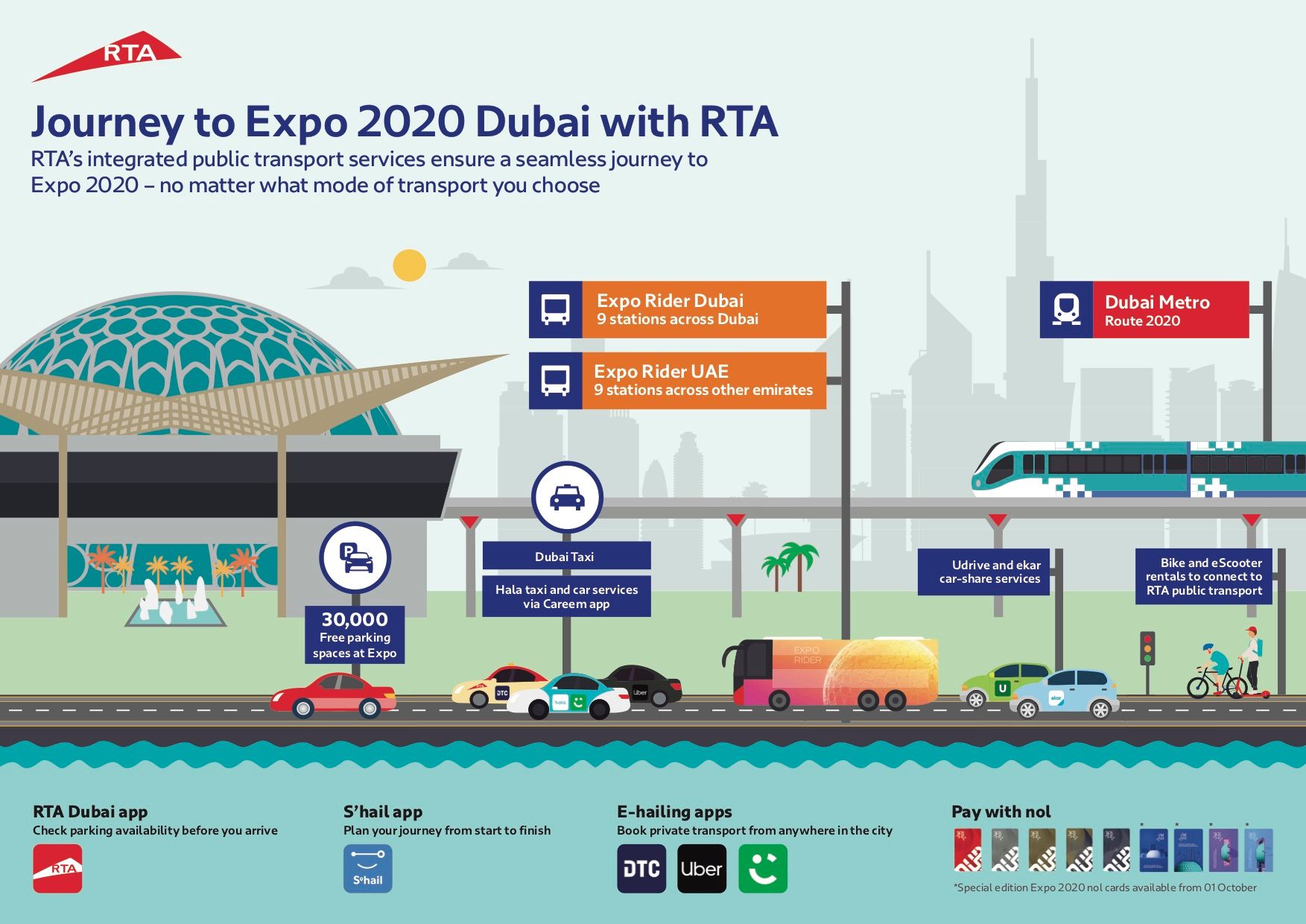
Route 2020
To enhance the huge role of the Dubai Metro, RTA had undertaken the construction of Route 2020 of the Dubai Metro. It extends 15 km from Jebel Ali Metro Station on the Red Line to Expo 2020 Station. It connects seven stations and provides safe and smooth transport for visitors of the Expo as well as Dubai districts.
Route 2020 serves communities populated by more than 270 thousand people namely the Gardens, Discovery Gardens, Al Furjan, Jumeirah Golf Estates, Dubai Investment Park and Dubai Expo 2020 site.
The route links 7 stations: 1 transfer station, 3 elevated stations, 2 underground stations and 1 iconic station: Expo 2020. The area of elevated stations ranges from 8,100 to 8,800 square metres, and the area of the two underground stations ranges from 27,000 to 28,700 square metres. Expo Station spans 18,800 square metres in area.
Stations and Buses
To facilitate the movement of Expo visitors from different emirates, RTA allocated 203 buses: (Expo Bus) to serve visitors to Expo 2020 from 18 stations (9 stations in Dubai, and 9 stations in other emirates). Expo bus service will be free of charge in Dubai from nine stations and stops, in addition to two routes to transport visitors from hotels directly to the site of Expo.
RTA designated 126 public buses to serve Expo 2020 visitors from 9 stations/stops across Dubai, namely Palm Jumeirah, Al Baraha, Al Ghubaiba, Etisalat, Global Village, International City, Dubai Silicon Oasis, Dubai Mall and Dubai International Airport (Terminal 3) through operating 455 to 476 trips per day. RTA will also provide two additional services: the EXPO Parking Shuttle service to transfer visitors from car parks to the three Expo Gates: (Opportunity, Mobility, and Sustainability) and the EXPO People Mover service to commute visitors between Expo Gates.
RTA will operate 77 buses to transport Expo visitors from nine locations outside Dubai, including three stations in Abu Dhabi city namely Abu Dhabi International Airport Station, Abu Dhabi Main Bus Station, Marina Mall Station, in addition to one point in Al Ain City at Al Ain Bus Station. There will be two stations in Sharjah: Al Jubail Bus Station, Muwailih Station. Other stations include Ras Al Khaimah Bus Station, Ajman Bus Station, and the bus stop near City Centre Fujairah. There will be 193 trips per day during weekdays, rising to 213 daily trips during the weekend (on Thursdays and Fridays).
9 Stations
RTA established nine public bus stations to serve Expo visitors, distributed over key areas in Dubai, namely: Al Ghubaiba, Etisalat, Al Baraha, Dubai Silicon Oasis, International City, Dubai International Airport (Terminal 3), Palm Jumeirah, Dubai Mall, and the Global Village.
New Generation
Al Ghubaiba Bus Station is a new generation of bus stations. The station consists of 6 buildings over an area of 2,452 square metres in total. It hosts office spaces, customers service areas, retail outlets and restaurants in addition to 50 bus stands, 48 parking slots, 34 taxi stands, and a docking station for 60 bikes. The station can handle up to 15,000 passengers per day whereas the current daily ridership is about 10,500 passengers.
Etisalat Bus Station is directly linked to Etisalat Metro Station on the Green Line of Dubai Metro. The station has 24 bus parking slots, 20 slots for accommodating buses overnight, and racks for 50 bikes. The station serves 7 bus routes, which will rise to 8 routes during Expo.
Modern Buses
The transit service for Expo 2020 visitors features buses of high safety and luxury standards, with comfortable seats and compatible with Euro 6 emission standards, making them the first of their kind in the MENA region. Buses have low floors to ease the boarding and disembarkation and make them accessible to people of determination. Buses are designed to deliver premium services to mass transit riders thanks to the high-class finishing works. Through the deployment of these high-quality buses across a wide geographical coverage, RTA seeks to make mass transit means the ideal choice of mobility for Expo visitors.
Taxis and Limos
RTA is deploying 15,000 taxis and limousines to serve the emirate and visitors to Expo 2020. They include 9,710 taxis and 5,681 limousines, which can be booked through the e-hail services of Uber and Careem. RTA added 10 vehicles to serve people of determination at the Expo 2020 site.
Taxi initiatives include the automated taxi deployment system, which secures the required number of taxis at the Expo 2020 site. Also, there is an initiative for paying the taxi fare through the e-wallet using the Alipay App, and the QR code service, without using credit card payment devices.
Mobility and Traffic Management
To plan and manage the mobility and traffic in Dubai, and streamline crowd movement during celebrations, RTA constructed the Enterprise Command and Control Centre and the Intelligent Traffic Centre at Al Barsha, which are the latest of their kind in the world.
Enterprise Command and Control Centre
The Enterprise Command and Control Centre (EC3) is one of the biggest and most sophisticated control centres in the world in utilising smart technologies. It controls and integrates various RTA’s mass transit systems (metro, tram, buses, taxis and water transport), and connects several traffic control centres. Thus, it enables the efficient planning of mobility journeys besides coping with different transit challenges.
The EC3 plays a key role in monitoring the multi-modal transit systems in the emirate, as well as managing incidents, crises, and events related to roads, transportation, and traffic. It is built to carry out advanced analysis of transportation network data and monitor more than 170 events across the emirate to ensure the smooth flow of traffic. It also monitors the speed of responding to emergency cases related to mobility in the emirate. The centre uses artificial intelligence to process big data amounting to 75 million mobility data-entry per day. These technologies enable RTA to plan smart mobility, improve transport efficiency and enhance customers’ experience.
Dubai’s Intelligent Traffic Centre
Dubai Intelligent Traffic Centre at Al Barsha is one of the most sophisticated control centres worldwide in terms of technologies used. It is a key pillar of the traffic safety strategy as well as the plan to expand the use of intelligent traffic systems and support the current and future transit means. The centre is vital in managing the traffic on the Dubai roads network. It sets a platform for integrated digital technologies that use artificial intelligence, big data and the internet of things. In addition to its advanced communication systems, the centre has an intelligent traffic control system: (iTraffic) powered by advanced technologies and analysis tools to predict the traffic situation, support decision-making, and ensure high efficiency in managing traffic and incidents. RTA had also developed and expanded smart traffic systems by developing an integrated infrastructure of traffic systems on Dubai’s roads network.
The coverage of roads network in the Emirate by intelligent traffic systems increased from 11% to 60%. Systems installed include 116 traffic monitoring cameras bringing the total number to 245 cameras in addition to 100 incident-monitoring and vehicle tracking devices to increase the number to 235 devices. it also installed 115 devices for computing the travel time and the average speed, and 17 road weather information systems.
Widening the use of smart traffic systems included the installation of 112 variable messaging signs powered by the latest technologies in the world to ensure the quality and clarity of traffic messages and signs used to broadcast alerts about incidents and congestions as well as directing motorists to alternative roads.
Smart and Innovative Services
RTA developed a package of smart and innovative projects and initiatives to serve visitors of Expo 2020 that included the provision of 8 innovative services. 5 of them are meant to serve public buses. They include a centre for the remote monitoring of bus efficiency. It covers buses dedicated to Expo service and displays Expo information and timetable of daily events on bus arrival screens. There is also a service of journey planning through S’hail on bus timetable screens. The system provides daily information about Expo, and the network of buses dedicate to shuttling visitors between Expo Gates (People Mover Buses). Services also include adding a new payment channel for using credit cards in the ticketing and top-up machines.
News Source: Government Of Dubai Media Office
